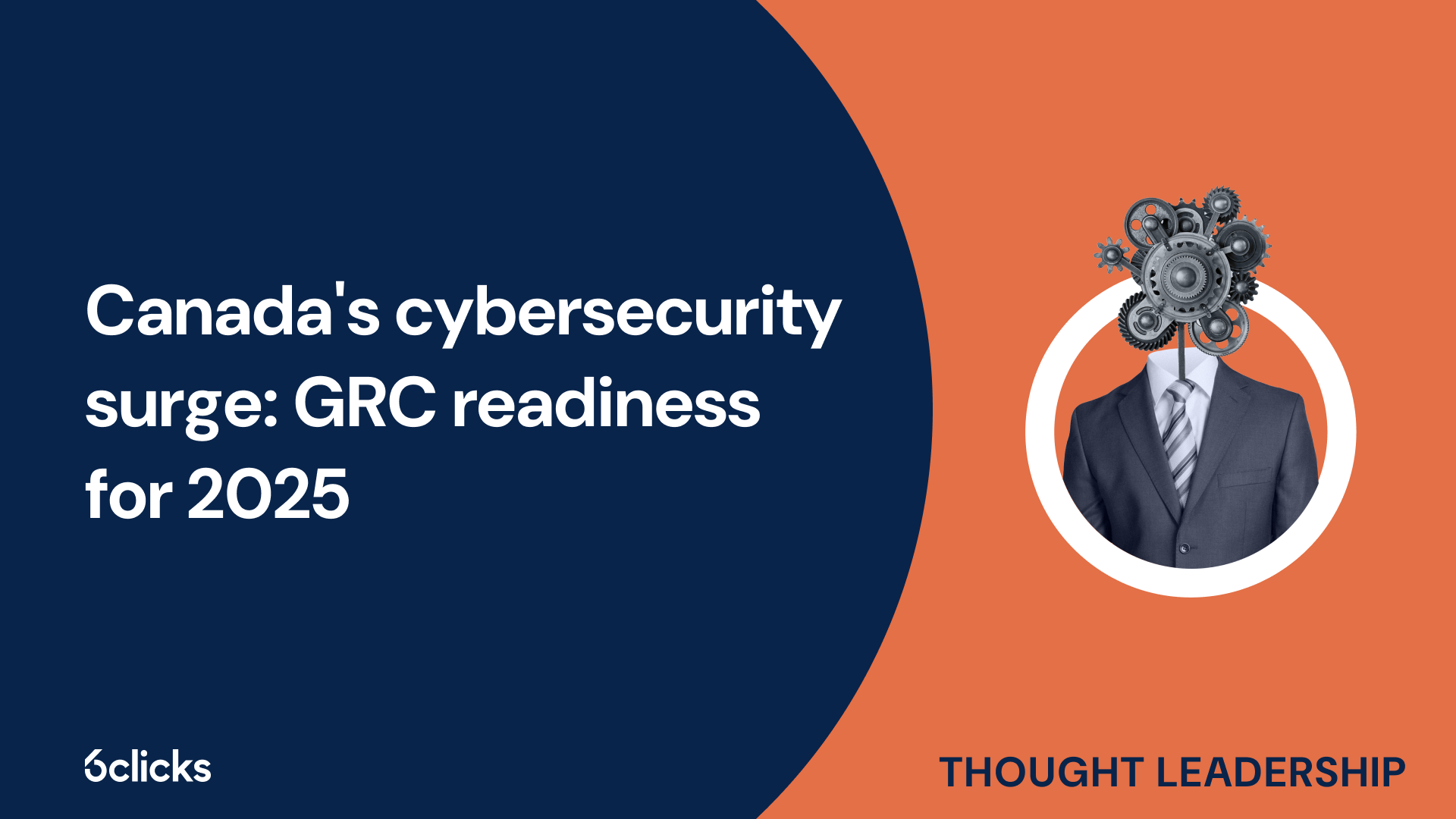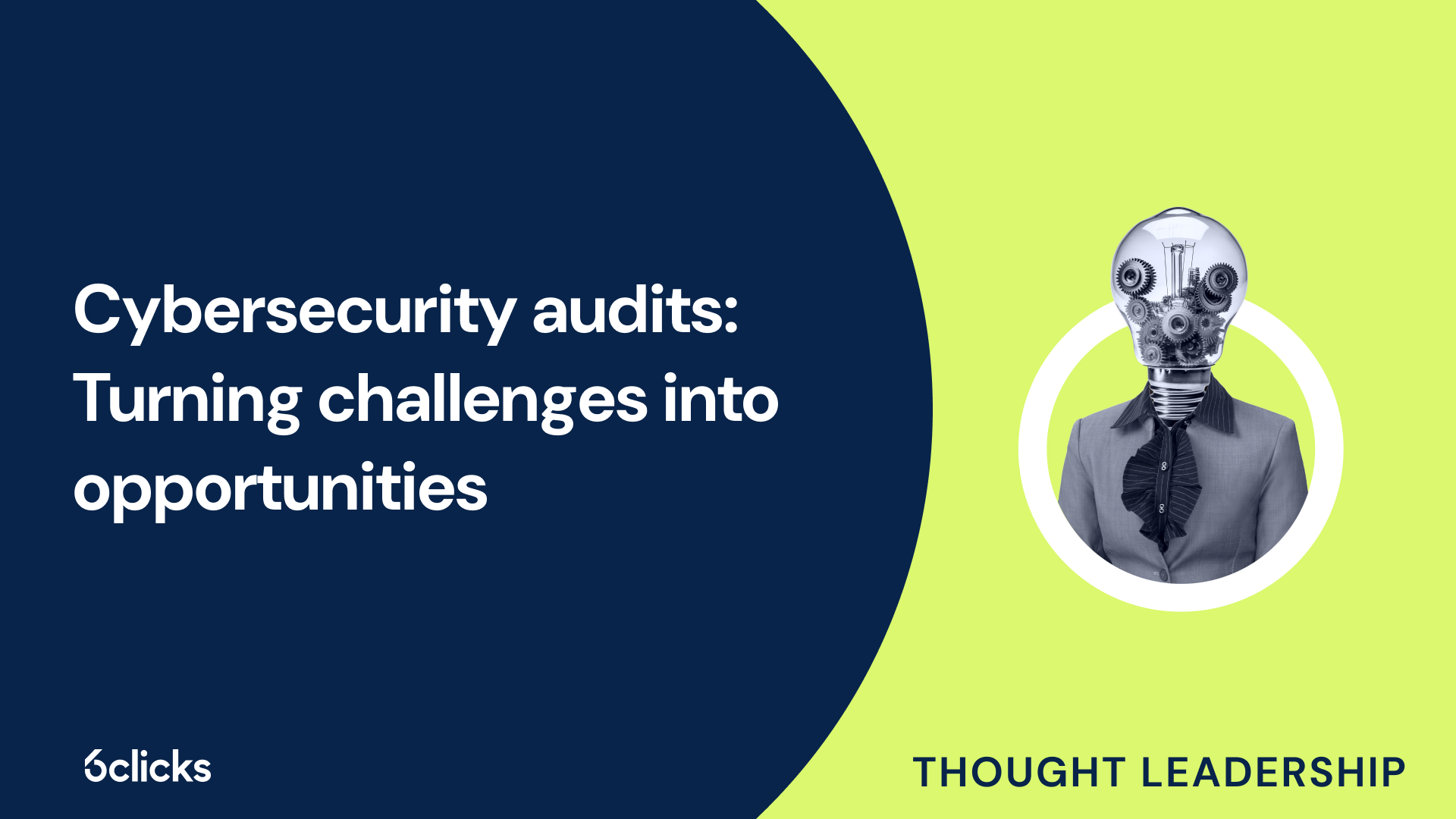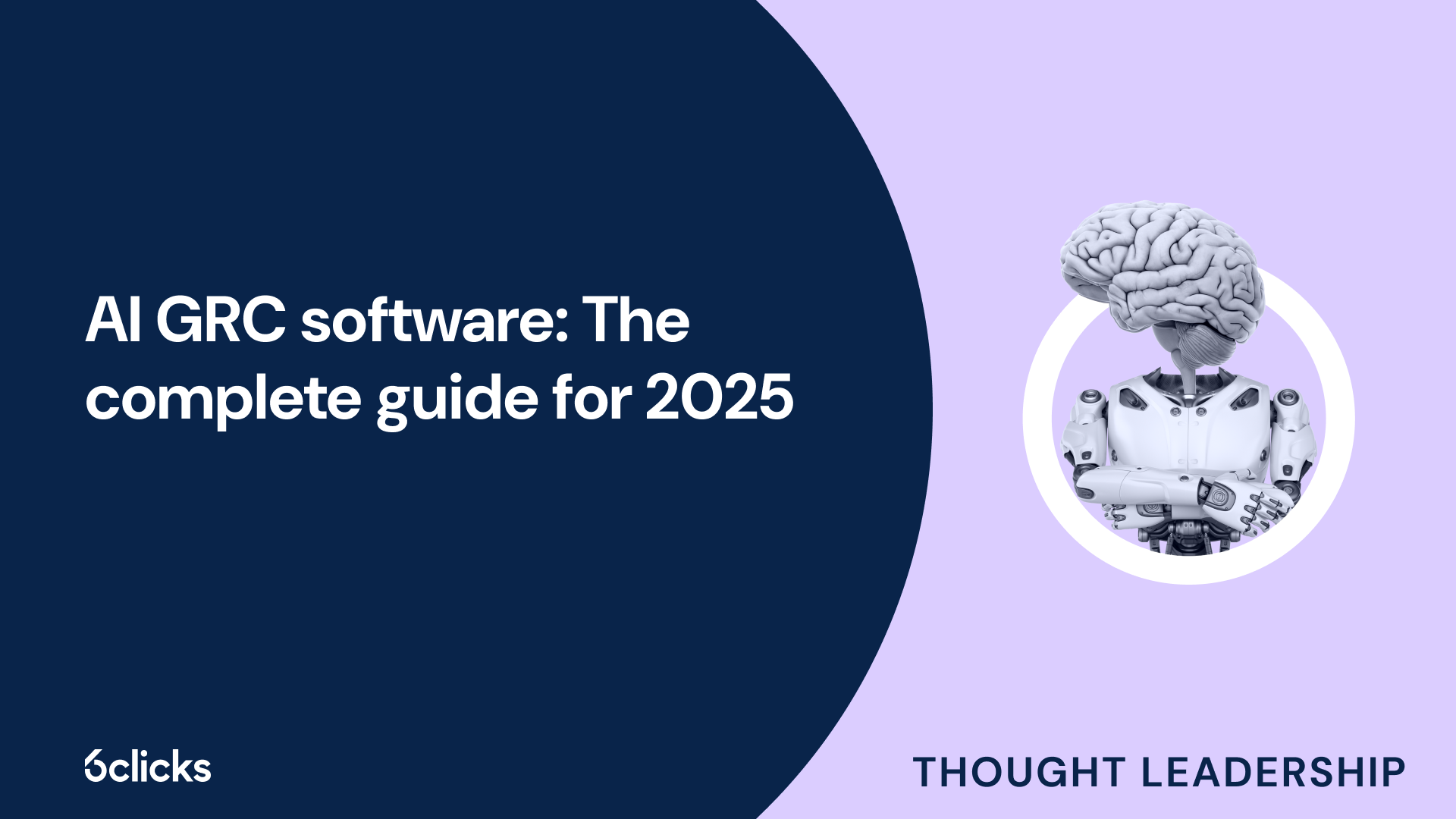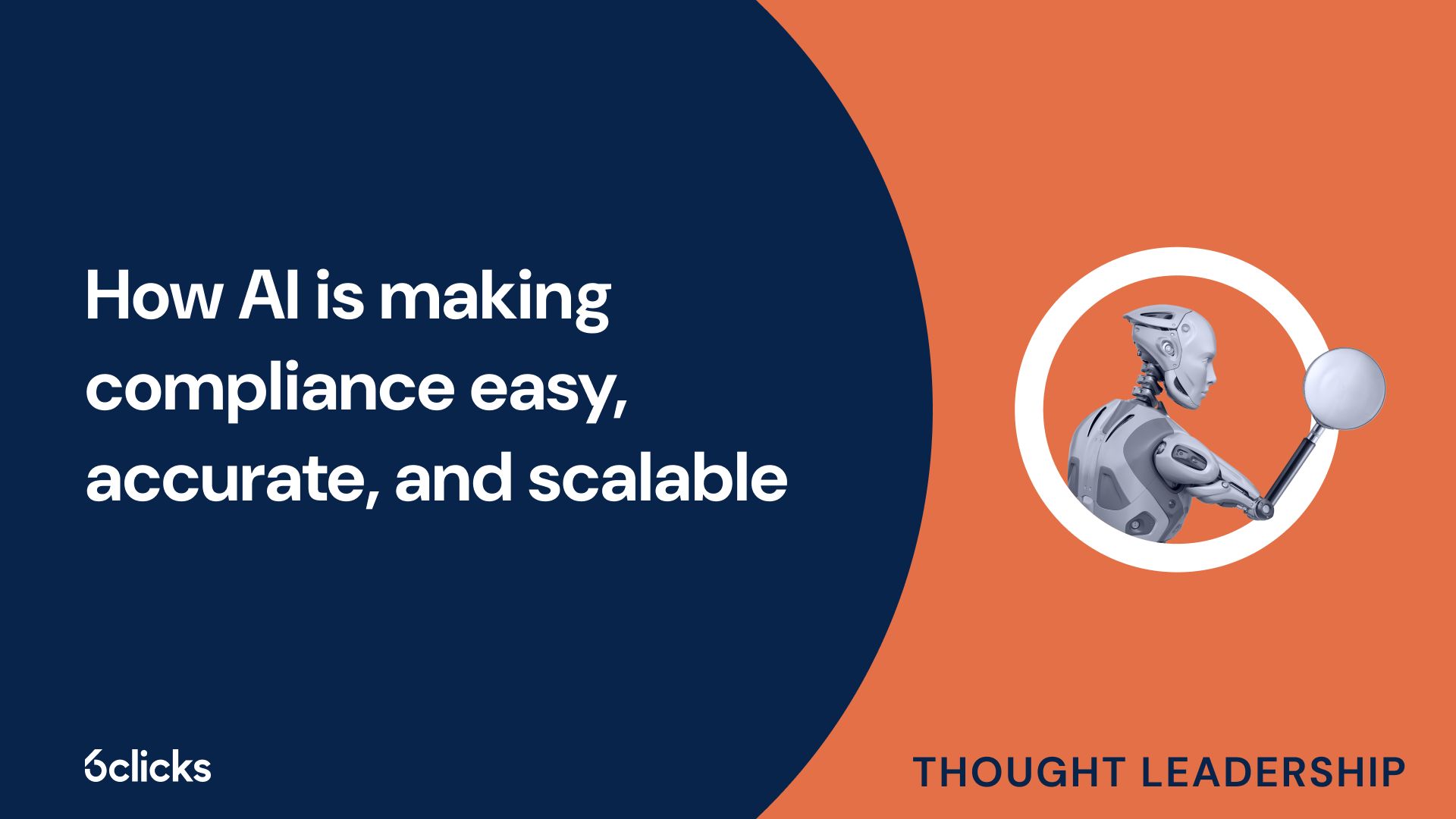The GRC buyer’s guide for 2025: Building resilience with AI-powered, federated solutions
Discover the ultimate GRC buyer's guide for 2025! Uncover how AI-powered, federated solutions transform compliance and security management for industries like government, aerospace, banking, and more. Learn about centralized control, continuous compliance, and advanced cyber GRC capabilities. Download now!
-1.png?width=200&height=249&name=Group%20193%20(1)-1.png)
The GRC buyer’s guide for 2025: Building resilience with AI-powered, federated solutions
Definition of ISO 27001 and NIST
ISO 27001 and NIST are two prominent frameworks in the cybersecurity field, each offering its own approach to managing information security risks. ISO 27001, also known as ISO/IEC 27001, is an international standard that provides a comprehensive set of specifications for establishing, implementing, maintaining, and continually improving an information security management system (ISMS). It is based on a risk management approach and focuses on protecting the confidentiality, integrity, and availability of an organization's information assets. On the other hand, NIST, short for the National Institute of Standards and Technology, has developed the NIST Cybersecurity Framework (CSF), which offers a flexible, voluntary framework for managing and reducing cybersecurity risks. The CSF consists of a set of guidelines, best practices, and standards that guide organizations in enhancing their cybersecurity posture. It emphasizes risk assessment and management, prioritization of investments, and the adoption of cybersecurity controls and processes. While both frameworks have their merits, the choice between ISO 27001 and NIST depends on an organization's specific needs, industry regulations, and risk management philosophy.
Overview of the two frameworks
ISO 27001 and NIST CSF are two widely recognized frameworks in the field of cybersecurity. ISO 27001 is an internationally recognized standard for information security management, while NIST CSF is a voluntary framework that focuses on improving cybersecurity risk management.
ISO 27001 provides a comprehensive set of controls and guidelines for organizations to establish, implement, maintain, and continually improve their information security management systems. It takes a risk-based approach to identify, assess, and manage information security risks, ensuring the confidentiality, integrity, and availability of information assets. ISO 27001 is ideal for organizations seeking a globally-recognized certification and a structured framework to mitigate cyber risks effectively.
On the other hand, NIST CSF is a framework developed by the National Institute of Standards and Technology (NIST) to help organizations manage and reduce cybersecurity risks. It provides a set of core functions, categories, and subcategories that can be tailored to an organization's cybersecurity program. NIST CSF allows organizations to align their cybersecurity goals with their business goals and industry regulations, enabling them to identify and prioritize security controls based on their current level of risk maturity.
Both ISO 27001 and NIST CSF are valuable frameworks that organizations can choose depending on their specific needs and objectives. While ISO 27001 provides a structured approach to managing information security risks, NIST CSF offers a flexible framework that can be adapted to various industries and organizations. Ultimately, the choice between the two frameworks will depend on an organization's goals, industry standards, and regulatory requirements.
Benefits of ISO 27001
Implementing ISO 27001 offers numerous benefits to organizations looking to strengthen their cybersecurity posture. Firstly, ISO 27001 provides a systematic and structured approach to managing information security risks, ensuring that organizations have a clear understanding of their security vulnerabilities and the necessary controls to mitigate them. This helps in preventing security incidents, reducing the potential for financial loss, reputation damage, and regulatory non-compliance. Additionally, ISO 27001's risk-based approach allows organizations to prioritize their security efforts and allocate resources effectively. It promotes a culture of continuous improvement, with regular assessments and audits ensuring that security controls are kept up to date and remain effective. Furthermore, ISO 27001 certification enhances an organization's reputation by demonstrating its commitment to information security to customers, partners, and stakeholders. It provides a competitive edge, as many organizations require ISO 27001 certification as a prerequisite for doing business. Overall, ISO 27001 helps organizations establish robust information security management systems, improving resilience, trust, and confidence in an increasingly digital and interconnected world.
Risk assessment and management
Risk assessment and management are critical components of both the ISO 27001 and NIST frameworks to ensure the security of an organization's information assets.
To establish and document a risk management framework, organizations need to perform a comprehensive risk assessment. This involves identifying and assessing potential risks and vulnerabilities to the confidentiality, integrity, and availability of information. The risk assessment process typically includes identifying assets, determining threats and vulnerabilities, calculating the likelihood and impact of risks, and defining risk scenarios.
Once the risk scenarios are identified, they can be ranked based on their criticality and impact on the organization. This ranking helps organizations prioritize their mitigation efforts and allocate resources effectively. It ensures that the most severe risks are addressed first and that the organization's focus is aligned with its business goals.
Continuous assessment and management of risks is crucial to maintain an effective cybersecurity program. This involves constantly monitoring and reviewing the risk landscape, updating risk assessments, and adapting risk management strategies as needed. By staying vigilant, organizations can proactively identify emerging risks, respond swiftly to cybersecurity incidents, and remain resilient in the face of evolving cybersecurity threats.
Compliance with regulatory requirements
ISO 27001 and NIST frameworks play a crucial role in helping organizations comply with regulatory requirements related to data protection and privacy. These frameworks provide guidance and standards for establishing and maintaining robust security controls and risk management practices, which are essential for meeting regulatory obligations.
ISO 27001 is an internationally recognized standard that focuses on information security management systems (ISMS). It provides a systematic approach to identifying, assessing, and mitigating risks to the confidentiality, integrity, and availability of information. By implementing ISO 27001, organizations can meet regulatory requirements related to data protection, such as the General Data Protection Regulation (GDPR) in the European Union. ISO 27001 helps organizations establish the necessary security controls and processes to protect personal data and ensure compliance with data subject rights, such as consent, access, and data erasure.
Similarly, the National Institute of Standards and Technology (NIST) provides the NIST Cybersecurity Framework (CSF), which offers a comprehensive set of guidelines and best practices for managing cybersecurity risks. The NIST CSF helps organizations align their cybersecurity programs with industry standards and regulatory requirements. It assists in meeting data protection obligations outlined by various regulations, including GDPR, by providing guidance on implementing robust security controls, conducting risk assessments, and responding to cybersecurity incidents.
Improved data security and privacy protection
Implementing ISO 27001 and NIST CSF can significantly enhance data security and privacy protection. These frameworks provide organizations with a systematic approach to identifying, assessing, and mitigating cybersecurity risks, ensuring the confidentiality, integrity, and availability of sensitive information.
By implementing ISO 27001, organizations establish an Information Security Management System (ISMS) that integrates security controls and processes into their operations. This enables organizations to meet regulatory requirements, such as GDPR, by protecting personal data and ensuring compliance with data subject rights. ISO 27001 also helps organizations improve their risk management practices by conducting regular risk assessments and implementing appropriate security controls.
Similarly, the NIST CSF offers a comprehensive set of guidelines and best practices for managing cybersecurity risks. It assists organizations in aligning their cybersecurity programs with industry standards and regulatory requirements. By following the NIST CSF, organizations can implement robust security controls, conduct thorough risk assessments, and effectively respond to cybersecurity incidents.
The key benefits of implementing these frameworks include improved data security and privacy protection, enhanced risk management practices, and alignment with regulatory requirements. Organizations can strengthen data security and privacy through the implementation of security controls like access controls, encryption, incident response plans, and ongoing monitoring and assessment of cybersecurity risks.
Comprehensive information security management system (ISMS)
A Comprehensive Information Security Management System (ISMS) is a structured framework that organizations implement to manage the confidentiality, integrity, and availability of their information assets. Both ISO 27001 and NIST emphasize the importance of implementing an ISMS to protect and secure sensitive information.
An ISMS serves as a central framework for managing information security risks, implementing security controls, and continuously improving security practices. It provides organizations with a systematic approach to identifying and mitigating security risks, ensuring compliance with regulatory requirements, and effectively responding to security incidents.
The key components of an ISMS include:
- 1. Risk Assessment: Organizations must conduct regular risk assessments to identify potential threats, vulnerabilities, and the impact of security incidents. This helps prioritize security controls and allocate resources appropriately.
- Security Controls: An ISMS provides a catalog of security controls that organizations can implement to safeguard their information assets. These controls may include access controls, encryption, network security measures, and employee awareness and training programs.
- Monitoring and Measurement: Organizations must establish processes for monitoring and measuring the effectiveness of their security controls. This allows for continuous improvement and proactive identification of security gaps or vulnerabilities.
- Incident Response: An ISMS includes a documented incident response plan to ensure a timely and effective response to security incidents. This includes establishing communication channels, defining roles and responsibilities, and conducting post-incident analysis to prevent future occurrences.
Implementing an ISMS based on ISO 27001 or following the NIST guidelines empowers organizations to establish strong security frameworks, manage information security risks effectively, and protect sensitive information assets from potential threats and vulnerabilities.
Demonstrating commitment to data protection and security standards
Organizations can demonstrate their commitment to data protection and security standards by implementing frameworks such as ISO 27001 and NIST CSF. These frameworks provide comprehensive guidelines and best practices for establishing a strong security posture and effectively managing information security risks.
ISO 27001 is an internationally recognized standard that focuses on establishing, implementing, and maintaining an Information Security Management System (ISMS) within an organization. It provides a systematic approach to identify, manage, and mitigate security risks, ensuring the confidentiality, integrity, and availability of information assets. By adopting ISO 27001, organizations can demonstrate their dedication to protecting sensitive data and complying with industry regulations.
Similarly, the NIST Cybersecurity Framework (CSF) is a widely adopted framework that offers a flexible and risk-based approach to managing cybersecurity risks. It provides a common language and a structured process for organizations to assess their current level of risk maturity, define target goals, and implement appropriate security controls. NIST CSF enables organizations to proactively address cybersecurity threats and enhance their overall security management.
Implementing these frameworks offers several benefits. Firstly, it strengthens the organization's data security by proactively identifying and mitigating potential threats and vulnerabilities. Secondly, it ensures compliance with industry regulations and standards, safeguarding the organization from legal and financial consequences. Lastly, it enhances the overall management of information security, leading to improved customer trust and credibility in the market.
Increased efficiency and productivity from automated processes
Implementing ISO 27001 and the NIST cybersecurity framework can significantly increase efficiency and productivity within an organization through the leverage of automated processes. These frameworks provide guidelines for implementing continuous system monitoring, which allows organizations to proactively identify and respond to security incidents and vulnerabilities in real-time. By automating this process, organizations can save time and resources that would otherwise be spent on manual monitoring and analysis.
Furthermore, ISO 27001 and the NIST cybersecurity framework assist in closing gaps in the implementation of an Information Security Management System (ISMS). Automating the assessment and measurement of security controls ensures that no areas are overlooked or left unaddressed. By continuously monitoring and updating the ISMS, organizations can efficiently identify gaps and take prompt actions to close them, ultimately reducing the risk of security breaches and incidents.
Streamlining the ISO 27001 certification process with automation can revolutionize manual data collection and observation procedures. Automated systems can collect and analyze data more accurately and quickly than traditional manual methods, enabling organizations to make informed decisions based on real-time information. This automation not only saves time and resources but also enhances the accuracy and reliability of the data collected, making the decision-making process more efficient and effective.
Demonstration of professionalism and credibility in the market place
In today's digital landscape, demonstrating professionalism and credibility is crucial for organizations to thrive in the marketplace. Implementing robust data protection and security measures is one way to establish trust and enhance an organization's reputation. Two widely recognized frameworks that can help accomplish this are ISO 27001 and the NIST Cybersecurity Framework.
ISO 27001 is an internationally recognized standard for information security management systems (ISMS). It provides a systematic approach for identifying, managing, and reducing risks to information assets. By obtaining ISO 27001 certification, organizations showcase their commitment to protecting sensitive information and providing a secure environment for stakeholders. This certification not only instills confidence in customers but also attracts potential clients who prioritize trust and security when choosing their business partners.
Similarly, the NIST Cybersecurity Framework offers guidelines and best practices to manage and mitigate cybersecurity risks. It provides a flexible, risk-based approach for organizations to assess and improve their cybersecurity posture. Adopting this framework demonstrates an organization's commitment to proactively addressing cybersecurity threats and protecting sensitive data.
Having certifications like ISO 27001 and adherence to the NIST Cybersecurity Framework can set organizations apart in a competitive market. It signals that they have implemented stringent security controls and processes to safeguard against cyber threats, inspiring confidence in customers and stakeholders. This differentiation can be a key factor for customers when deciding which business to trust with their valuable data.
Benefits of NIST cybersecurity framework (CSF)
The NIST Cybersecurity Framework (CSF) offers numerous benefits to organizations looking to enhance their cybersecurity posture. This framework provides a flexible, risk-based approach that helps organizations identify, assess, and manage cybersecurity risks effectively. By following the guidelines and best practices outlined in the NIST CSF, organizations can improve their overall cybersecurity program and protect sensitive information from cyber threats. The NIST CSF also promotes communication and collaboration between IT and business leaders, enabling a holistic approach to cybersecurity management. Additionally, the NIST CSF helps organizations align their cybersecurity efforts with industry regulations and standards, ensuring compliance and avoiding potential penalties. By adopting the NIST CSF, organizations demonstrate their commitment to cybersecurity excellence and can gain a competitive advantage by instilling confidence in their customers and stakeholders.
Holistic approach to cybersecurity risk management
The NIST Cybersecurity Framework (CSF) takes a holistic approach to cybersecurity risk management, providing organizations with guidelines, best practices, and standards to assess vulnerabilities, implement security controls, and mitigate cyber risks. This comprehensive framework enables organizations to develop a robust cybersecurity strategy that aligns with their business goals and objectives.
At its core, the CSF encompasses five key functions: Identify, Protect, Detect, Respond, and Recover. These functions help organizations assess their current level of risk maturity, prioritize security controls, and establish a risk-based management approach. The Identify function focuses on understanding and managing cybersecurity risks to systems, assets, data, and capabilities. The Protect function involves implementing safeguards to ensure the delivery of critical services. The Detect function involves the continuous monitoring of systems, networks, and data to identify cybersecurity incidents promptly. The Respond function outlines procedures for effectively responding to and mitigating the impact of a cyber incident. Finally, the Recover function focuses on restoring any capabilities or services that may have been impacted by a cybersecurity incident.
By following the NIST CSF, organizations can create a comprehensive cybersecurity program that addresses the ever-evolving landscape of cybersecurity threats and vulnerabilities. The guidelines and best practices provided within the framework enable organizations to establish a solid foundation for protecting their information and systems, while also enabling continuous improvement through regular risk assessments, incident response procedures, and continuous monitoring practices.
Flexible implementation for different types of organizations
The NIST cybersecurity framework (CSF) is designed to offer flexible implementation options that cater to the needs of different types of organizations. This flexibility allows organizations to adapt the framework to suit their unique cybersecurity risks and requirements.
One of the key benefits of the NIST CSF is its adaptability. It can be customized and tailored to fit various industries and business models, taking into consideration their specific needs and challenges. This adaptability ensures that organizations can effectively address their cybersecurity risks while aligning with industry regulations and standards.
Furthermore, the flexibility of the NIST CSF enables scalability. Organizations can start small and gradually scale up their cybersecurity programs as their needs evolve. This allows for a cost-effective approach, especially for smaller organizations that may have limited resources.
The customizable nature of the NIST CSF also means that organizations can prioritize the implementation of security controls based on their specific risk profiles. This ensures that resources are allocated efficiently to mitigate the most significant cybersecurity risks.
Alignment with regulations, laws, and policies
Both ISO 27001 and the NIST frameworks provide organizations with guidelines and best practices for aligning with various regulations, laws, and policies related to cybersecurity.
ISO 27001, as a globally recognized certification, helps organizations comply with a wide range of regulatory requirements. For instance, it assists in meeting the requirements of the European General Data Protection Regulation (GDPR) by implementing appropriate security controls and risk management frameworks to protect personal data. ISO 27001 also addresses the requirements of the Health Insurance Portability and Accountability Act (HIPAA) by ensuring the security and confidentiality of healthcare data.
Similarly, the NIST CSF provides organizations with a risk-based approach that helps them align with numerous regulations and policies. One such example is the cybersecurity framework's alignment with the Federal Information Security Management Act (FISMA). By following the NIST CSF, organizations can ensure compliance with FISMA requirements for federal agencies. Additionally, the NIST CSF supports the implementation of the Cybersecurity Maturity Model Certification (CMMC), which is essential for organizations doing business with the U.S. Department of Defense.
Both frameworks offer comprehensive guidance and controls that enable organizations to meet regulatory requirements, align with industry standards, and build robust cybersecurity programs. Implementing these frameworks not only helps organizations enhance their security posture but also ensures compliance with relevant laws and policies.
Clear communication across the organization
Clear communication across the organization is essential for promoting compliance and maintaining an Information Security Management System (ISMS). It ensures that all employees are aware of the organization's policies, procedures, and expectations related to information security.
Firstly, clear communication helps in establishing a shared understanding of the importance of information security throughout the organization. By clearly articulating the risks associated with potential security breaches and the impact they can have on the organization, employees are more likely to understand and comply with the established policies and procedures.
Additionally, effective communication allows for the dissemination of updates and changes in information security requirements, ensuring that employees are aware of any new guidelines or procedures. This is particularly important in a rapidly evolving threat landscape, where the organization needs to continuously adapt and enhance its security measures.
Establishing communication channels, such as regular trainings and documentation, further reinforces the importance of information security practices. These channels provide a platform for educating employees on security awareness, best practices, and their roles and responsibilities in maintaining a secure environment.
In cases of non-compliance, clear communication is vital in addressing the issue. Employees must be made aware of the consequences of not adhering to information security policies. Developing clear disciplinary processes ensures that non-compliance is appropriately dealt with, discouraging future violations and promoting a culture of security awareness.




.jpg?width=302&height=170&name=eBook%20Title%20-%20Risk%20management%20for%20ISO%2027001%20and%20ISMS%20expert%20guide%20eBook%20(1).jpg)





